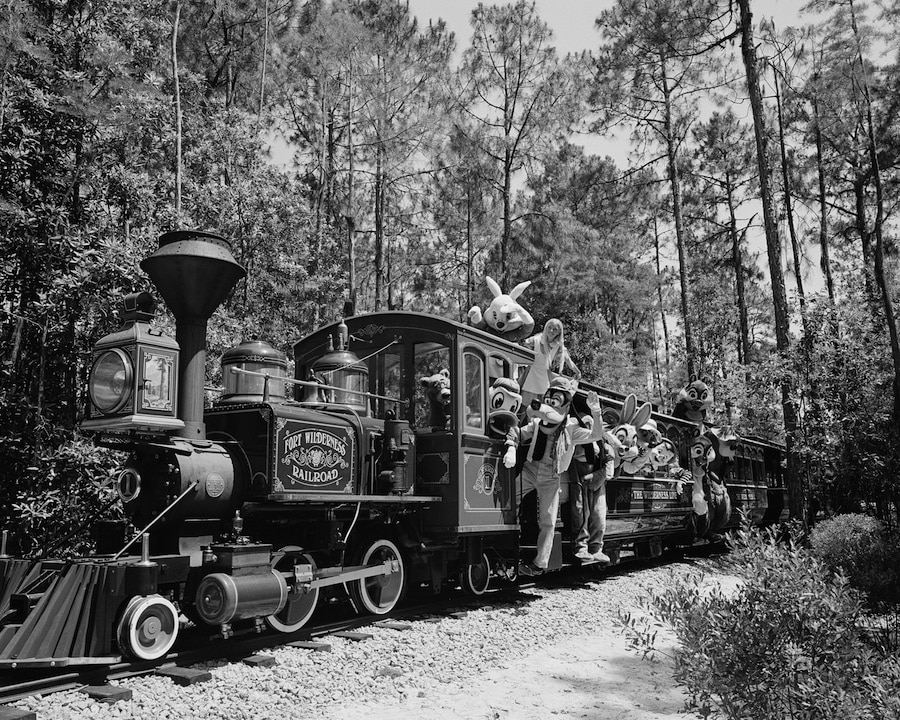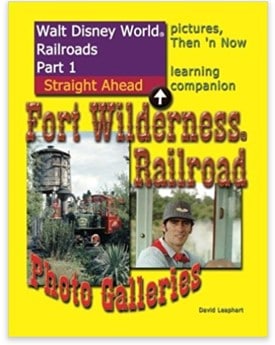A Friday Visit with Jim Korkis: Fort WIlderness Railroad
By Dave Shute
Welcome back to Fridays with Jim Korkis! Jim, the dean of Disney historians, writes about Walt Disney World history every Friday on yourfirstvisit.net.
FORT WILDERNESS RAILROAD
By Jim Korkis
With the new Disney Vacation Club Resort Reflections being built there, changes are coming to the Fort Wilderness Resort and Campground that opened on November 19, 1971.
However, over the decades many things changed at the Fort. When it opened, it was much larger than most campgrounds at the time, so trams, bicycles and buses provided guests with transportation options to get where they needed to go.
From the very beginning, there were plans for a “campground railroad” to provide transportation and add to the rustic “theming” of the area. The official opening and dedication ceremony of the Fort Wilderness Railroad was January 1, 1974.
The railroad was considered a Disney attraction, and was promoted accordingly on marketing material, even charging guests a minimal fee fifty cents per day (later a dollar) to use it. This made Fort Wilderness the only Disney resort, so far, that had an attraction. It lasted roughly six years until February 1980.
The railroad consisted of four steam trains, each pulling five cars, around a circular route through the campground at a maximum speed of ten miles an hour. Each engine ran on steam and used diesel fuel to stoke the fire. The track was approximately twice the length of the track at the Magic Kingdom Park.
Each train was roughly about 150 feet long and could seat up to 90 guests.
The trains were smaller than the ones at the Magic Kingdom and were based on the traditional Baldwin “plantation locomotives” popular in the Hawaiian Islands.
The railroad used a smaller gauge track (30 inches between the rails on the track) than at the Magic Kingdom (36 inches), which may have influenced people into thinking that the train itself was scaled smaller, but it was full-sized.
Unlike every other Disney train (even the ones operating on Big Thunder Mountain Railroad), none of the engines were ever named. They were only numbered, and each of the four engines had a distinctive icon on the headlamps: elk, bison, deer and ram.
In the beginning, the train ran from 8 a.m. to 9 p.m. everyday causing some complaints from guests who disliked the fact that at all grade crossings the extremely loud whistle would sound. Eventually, the trains would cease operation around 5 p.m., eliminating that problem.
The heyday of the railroad was the opening of River Country in May 1976, where the train became the favored mode of transportation. New additions had to be made to the train cars including rubber floors, because of the dripping wet guests who had enjoyed Disney’s first water park.
The Disney Company never gave an official explanation or even an official closing date. The railroad was simply put on “hiatus” early in 1980.
Some claimed that safety was an issue and that the nearness of the tracks to the guests made Disney Legal fearful. Some claimed that the train produced too much noise and it disturbed guests. Some claimed that it was just too expensive to operate and could never recover its costs.
The bottom line is that the track was not laid correctly in the first place, so that even with several attempts to make adjustments the basic problem still existed that could not be overcome without a hefty investment.
After years of being outside and subjected to Florida heat and humidity, the engines and the coach cars were sold off to private collectors who restored them. All of the engines are now in California. Former Disney Executive John Lasseter has an engine and a couple of coach cars in his backyard railroad in Northern California.
Two of the coach cars were modified and placed temporarily at the entrance of Pleasure Island as ticket booths; one of those coaches is now at the front of Typhoon Lagoon, and the other was auctioned off. Four of the cars and 3,000 feet of track were donated to the Brevard Zoo in Melbourne, Florida, but over the years those coaches also found other homes.
* * * * *
Thanks, Jim! While you don’t have to be a railroad fan to be a Disney World fan, it helps. For those who are both, this book is in my library:
For more on Fort Wilderness, based on my nine stays there, see this. And come back next Friday for more from Jim Korkis!
In the meantime, check out his books, including his latest, The Unofficial Walt Disney World 1971 Companion: Stories of How the World Began, and Secret Stories of Walt Disney World: Things You Never You Never Knew, which reprints much material first written for this site, all published by Theme Park Press.
Follow yourfirstvisit.net on Facebook or Twitter or Pinterest!!






1 comment
Awesome.
I always wondered about the story of that railroad.
Leave a Comment | Ask a Question | Note a Problem